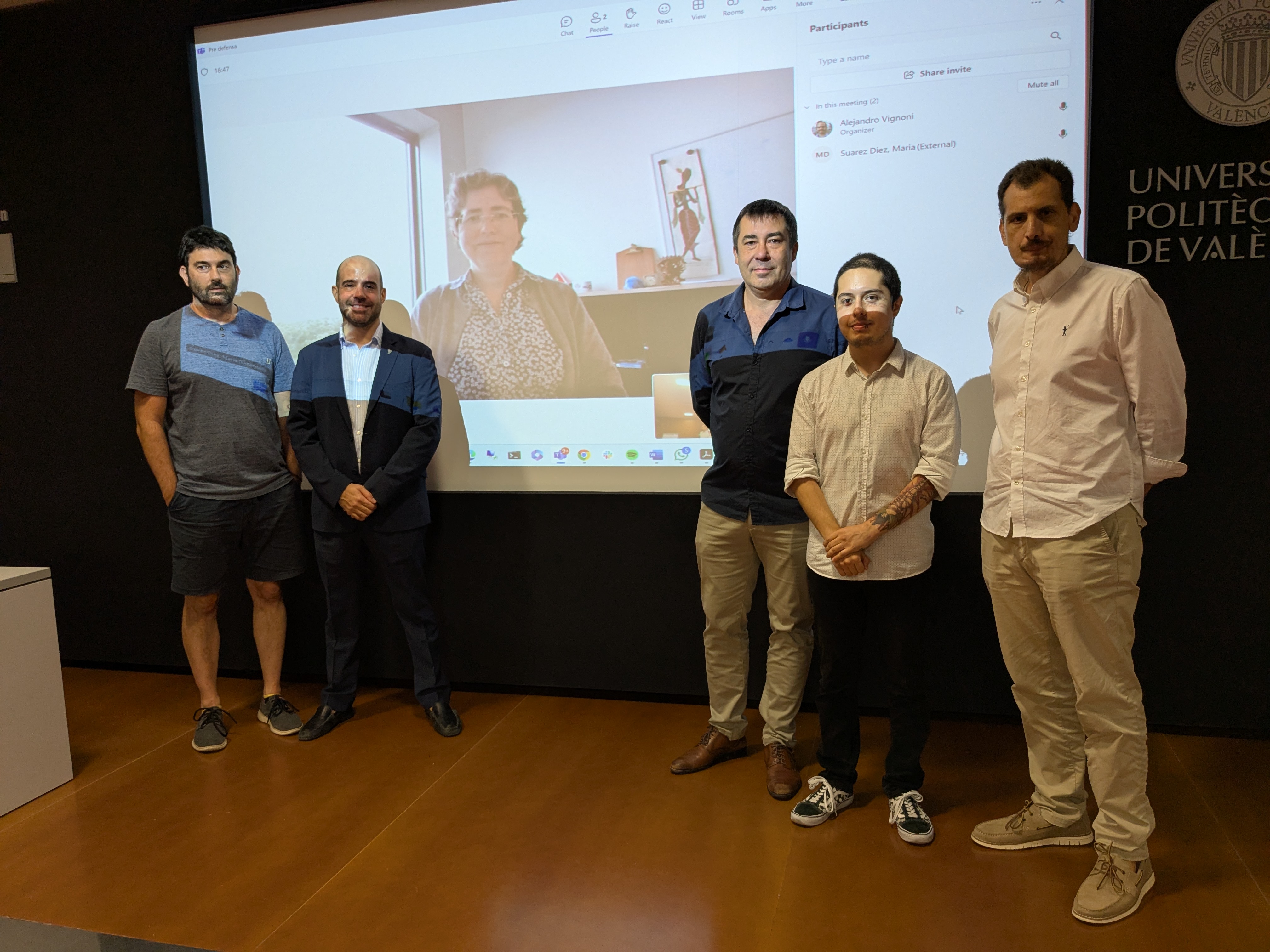Users
Social media
- More details here...
- Address
Parc Científic de la Universitat de València C/
Catedrático Agustín Escardino, 9
46980 Paterna (Valencia) Spain - Email:
iu.i2sysbio@uv.es - Phone:
(+34) 963544810
- Address
Links
Lucas Goiriz Beltrán defends his thesis on viral evolution using advanced mathematical modeling

Investigation
Lucas Goiriz Beltrán defends his thesis on viral evolution using advanced mathematical modeling
This thesis, co-directed by Guillermo Rodrigo and J. Alberto Conejero, proposes the use of advanced mathematical modelling for the study of viral evolution. Part of the research results have been published in the journal Proceedings of National Academy of Sciences of the USA (PNAS). The thesis was defended on 25 July 2025.
Lucas Goiriz Beltrán has defended his PhD thesis, submitted by Lucas to obtain his PhD at the Polytechnic University of Valencia, offering new insights into how viruses like SARS-CoV-2 evolve and adapt over time. His research uses powerful mathematical models to understand how mutations appear and spread in viral genomes—work that could help shape future strategies in public health, pandemic response, and vaccine design.
Under the supervision of professors Guillermo Rodrigo and J. Alberto Conejero, Goiriz applied advanced statistical and computational techniques to analyze millions of viral genome sequences. His thesis, titled 'Stochastic dynamic modeling of evolving gene expression programs', focuses on RNA viruses, which mutate rapidly and unpredictably.
One of the thesis’s key findings is that viral evolution doesn’t always follow traditional models that assume mutations happen at a constant rate. Instead, Goiriz found that the pace of viral change often speeds up or slows down—especially during the emergence of new variants like Alpha and Omicron. This challenges long-standing assumptions in evolutionary biology.
His work also introduces new ways to describe and measure these irregular mutation patterns, using tools from the field of “fractional Brownian motion.” These models reveal how evolutionary changes are influenced by complex factors such as population bottlenecks, natural selection, and the dynamics of virus transmission.
“This research helps us better understand not just how fast viruses mutate, but how that variability unfolds,” said Goiriz. “By focusing on the variance, not just the average, we get a clearer view of viral evolution in action.”
Beyond academic contributions, the models and tools developed in the thesis are designed to be scalable and reproducible—providing valuable resources for synthetic biologists and researchers tracking viral evolution and preparing for future outbreaks.


